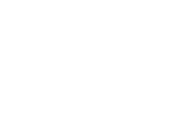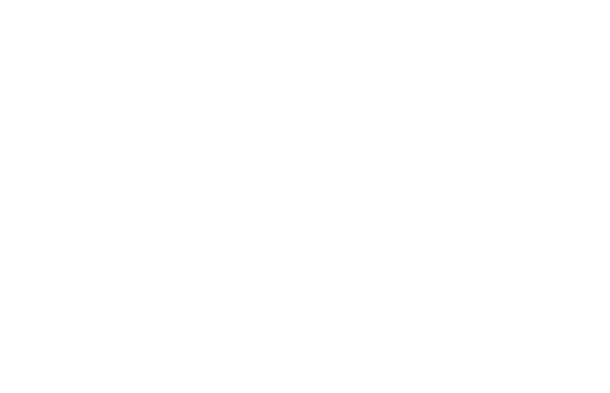 |
 |
 |

|
Michelangelo Pistoletto
'Senza Titolo 87 & Senza Titolo 88'
'Senza Titolo 87': 1976-2013, foil, site specific dimensions. Artwork 87 from the yellow book ‚"Cento mostre nel mese di ottobre", Turin 1976; 'Senza Titolo 88': 1976-2013, rods, site specific dimensions. Artwork 88 from the yellow book ‚ "Cento mostre nel mese di ottobre", Turin 1976
Courtesy GALLERIA CONTINUA, San Gimignano / Beijing / Le Moulin
Photo: Nicolas Giraud
|
|
 |
GALLERIA CONTINUA / Les Moulins
MICHELANGELO PISTOLETTO
100 mostre nel mese di ottobre, 1976
26/10/2013-22/12/2013
After the resounding success of Year 1: Earthly Paradise, a retrospective at the Louvre featuring historic works of Arte Povera, GALLERIA CONTINUA is pleased to welcome Michelangelo Pistoletto and his 100 mostre nel mese di ottobre, 1976 (« 100 exhibitions in the month of October 1976 »).
This exhibition springs from a text of the same name written by the artist and published by the Galleria Giorgio Persano in 1976—a book listing 100 imagined exhibition projects written during the month of October that same year. While the artist favored the book as his medium of choice for this work in the 1970s, this book is now scattered throughout the rooms of the old paper mill and the artist’s words now transform themselves and become visible to the visitor capable of believing in an epiphany of the Word.
|

|
Posted 26 October 2013
|
Share this:
|
|
|
|
|
|
|
|
|
|
While GALLERIA CONTINUA / San Gimignano inaugurated a solo exhibition by Michelangelo Pistoletto in which certain pieces described in this text were first realized last September, GALLERIA CONTINUA / Les Moulins almost simultaneously undertook this same journey, continuing this unconventional narration. The industrial space becomes a cube for the artist—it transforms into the ideal space where he imagines each exhibition—an imaginary cube where interior and exterior become complementary receptacles for ideas.
|
“
Space divided horizontally by a surface with a hole to peek one’s head through to see the top section
Michelangelo Pistoletto
”
|
|
|
|

Michelangelo Pistoletto
'Mirror Cage - Double Square'
1975-2007, mirror, iron, 5 elements: 100 x 100 x 20,5 cm each
Courtesy GALLERIA CONTINUA, San Gimignano / Beijing / Le Moulin
Photo: Alicia Luxem
|
|
|
|
|
|
|
These words describe work 84/100, the piece that opens the exhibition at Les Moulins: a small room whose ceiling has been lowered and in which an opening has been made, a space to be worn like a garment, the body dressing itself in the architecture that surrounds it thanks to the constrained position where an unexpected vision is revealed.
Further on, one can read: “Buy four mirrors from four different mirror dealers. Each will have its back painted a different color. Paint four walls the respective color of each mirror. Affix each mirror to the wall with its corresponding color, with the reflective surface turned toward the wall. The mirrors are centered on each wall and sit on the floor, leaning at a slight angle.”
This statement for work 50/100 introduces one of the artist’s favorite materials. The mirror in Michelangelo Pistoletto’s work welcomes and constitutes an image of the world, humanity, and society, as well as a cosmic image. Here, the visible and its opposite are confronted, giving both a physical and a metaphysical dimension to the work.

|

|

|

|

|
|
|
Michelangelo Pistoletto
'Mirror Cage - Double Square'
1975-2007, mirror, iron, 5 elements: 100 x 100 x 20,5 cm each
Courtesy GALLERIA CONTINUA, San Gimignano / Beijing / Le Moulin
Photo: Alicia Luxem
|
|
|
|
|
Michelangelo Pistoletto
'Mirror Cage - Double Square'
1975-2007, mirror, iron, 5 elements: 100 x 100 x 20,5 cm each
Courtesy GALLERIA CONTINUA, San Gimignano / Beijing / Le Moulin
Photo: Alicia Luxem
|
|
|
|
|
Michelangelo Pistoletto
'Mirror Cage - Double Square'
1975-2007, mirror, iron, 5 elements: 100 x 100 x 20,5 cm each
Courtesy GALLERIA CONTINUA, San Gimignano / Beijing / Le Moulin
Photo: Alicia Luxem
|
|
|
|
|
|
The mirror and its revealing qualities reappear in Il Grande Pozzo in the twists and turns of the Labyrinth (Labirinto e Grande Pozzo, 1963-2013), an historic piece that evokes Arte Povera and that enables the history of the Le Moulin paper mill to manifest through its use of cardboard. In works 87/100 and 99/100, the stimulation produced by the site’s living presence becomes real and each element that composes them is the result of a contingent necessity.
This is also the case for the old machine room, where the work Mirror Cages at once becomes both content and container of the exhibition space.
Over the summer of 1993, the artist began a new phase in his work with Segno Arte, a form created by the intersection of two triangles within which a human body can be perfectly inscribed, with arms raised and legs spread. Inspired by Leonardo da
Vinci’s Vitruvian Man, the work underscores the harmonious proportions of the human body. This sign can be found in certain of the works exhibited here, inviting each individual to have his own sign, as the artist says, like a key to open the door to art.
The exhibition comes to a close in the Moulin de Sainte-Marie’s open spaces with an questioning by the monumental cage Spazio Libero (Free Space), work 90/100 from the 100 mostre nel mese di ottobre. Realized by inmates of the San Vittore de
Milan prison in 1999, and already shown at the Tuileries Garden in Paris for the 2008 edition of the FIAC, it presents itself as an inverted free space, where it is rather the inaccessible interior of the cage that houses freedom, while we are on the outside.

|

|

|

|

|
|
|
Michelangelo Pistoletto
'Senza Titolo 99'
1976-2013, wood, shoes, site specific dimensions. Artwork 99 from the yellow book "Cento mostre nel mese di ottobre", Turin 1976
Courtesy GALLERIA CONTINUA, San Gimignano / Beijing / Le Moulin
Photo: Alicia Luxem
|
|
|
|
|
Michelangelo Pistoletto
'Sequenza V. L. P. - Segno Arte'
2007, print on moquette, 180 x 144 cm (5 elements)
Courtesy GALLERIA CONTINUA, San Gimignano / Beijing / Le Moulin
Photo: Nicolas Giraud
|
|
|
|
|
Michelangelo Pistoletto
'Spazio Libero'
1976-1999, steel, 450 x 600 x 600 cm
Courtesy GALLERIA CONTINUA, San Gimignano / Beijing / Le Moulin
Photo: Nicolas Giraud
|
|
|
|
|
|
Michelangelo Pistoletto was born in 1933, in Biella, Italy. His first solo exhibitions took place in Turin, in 1955 and 1960. His works from the second half of the 1960s were recognized as having a certain filiation with Arte Povera, and he is now considered one of the most important European artists alive. His works have been exhibited in world-class institutions such as the Palazzo Grassi in Venice, the Nationalgalerie in Berlin, the MoMA in New York, the MAC in Lyon, the Louvre in Paris, and the Tate Gallery in London, and many of his pieces belong to the most prestigious collections. In 1998, he created the
Cittadellarte foundation in his hometown of Biella as a realization of his artistic reflection Progetto Arte: a space filled with creative energy directed toward areas of research where art, education, economics, ecology, and politics intersect, in the aim of developing dynamic relationships between all disciplines.
GALLERIA CONTINUA / Les Moulins
46 rue de la Ferté Gaucher
F-77169 Boissy-le-Châtel
+33(0)1-64203950
lemoulin@galleriacontinua.fr
www.galleriacontinua.com
|
|
|
|
|
|
|


